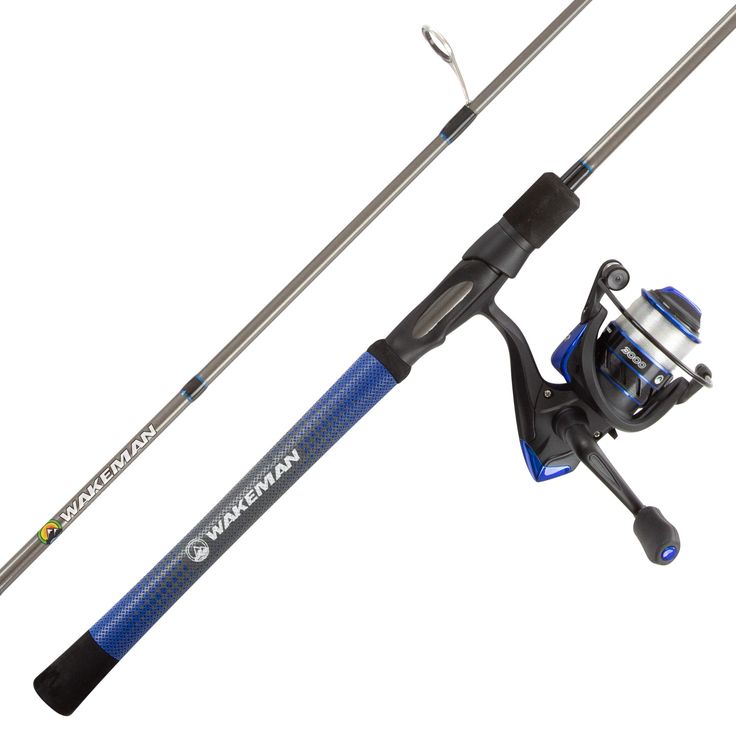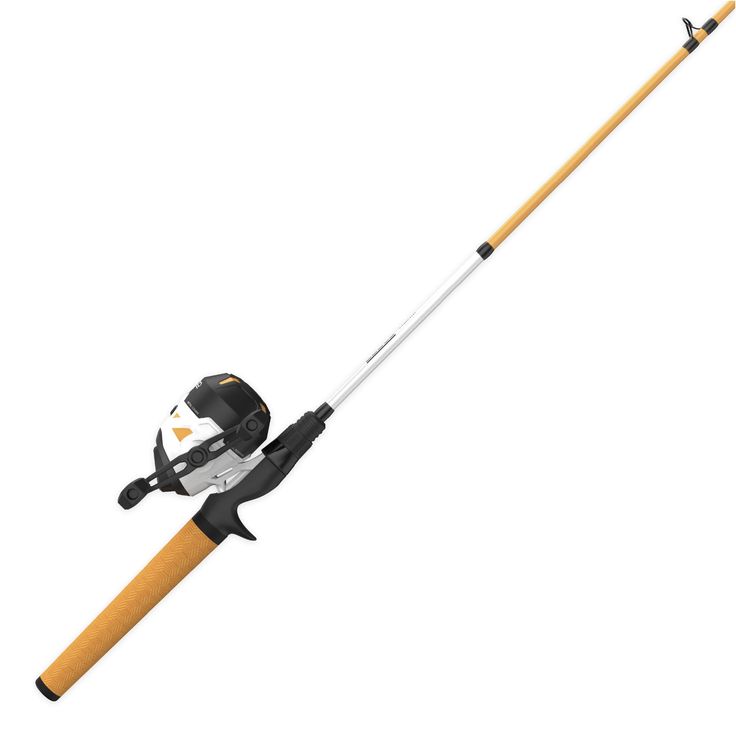Introduction to Fishing Rod Crafting
Fishing is both an art and a passion. Crafting your fishing rod is a way to deepen that connection. Each rod is unique. It reflects the angler’s style and fishing needs. Knowing how to craft a fishing rod is empowering. It allows for customization that store-bought rods lack. This guide will walk you through the essentials of rod making. You’ll learn about the materials and tools needed. Step-by-step instructions will follow. We will ensure you grasp each part of the process. By the end, you’ll be ready to craft a fishing rod. It will be uniquely yours, a true extension of your fishing prowess. Let’s dive into the immersive world of fishing rod crafting.

Necessary Materials for Making a Fishing Rod
To learn how to craft a fishing rod, you need the right materials. Quality materials make a rod reliable, durable, and suited to your fishing style. This section covers the essentials. You will find out about rod blanks, guides, handles, and reel seats. Let’s begin by gathering everything needed to build a perfect fishing rod.
Choosing the Right Rod Blank
The rod blank is the backbone of your fishing rod. It’s the long, flexible shaft you’ll cast. Choosing the right blank depends on what kind of fishing you do. Factors like length, power, and action are key. A longer blank casts farther, while shorter ones offer more precision. Power denotes the rod’s strength, while action determines flexibility. Think about what you’ll be fishing for and choose a blank that matches your needs.
Selecting the Proper Guides
Guides direct the fishing line along the rod blank. They are small rings spaced tightly together. This ensures smooth casting and retrieval. When selecting guides, consider the material and size. Stainless steel or ceramic are common choices. They must be smooth to reduce friction and prevent line damage. The size and number of guides depend on your rod’s length and type.
Handle and Reel Seat Materials
Last, focus on the handle and the reel seat. They are crucial for comfort and control. The handle can be made of cork, foam, or wood. It should fit comfortably in your hand for hours of fishing. The reel seat holds your reel in place. It needs to be sturdy and align well with the rod blank. Look for materials that won’t corrode and ensure a tight, secure fit with your reel.
Tools Required for Rod Crafting
In rod crafting, the right tools set you up for success. Let’s look at the essential tools you’ll need. Begin with a rod building jig. It holds the rod blank in place as you work. Next, you need a thread wrapping tool. It helps you attach guides and handles neatly. Don’t forget a good pair of scissors and a razor blade. They make cutting thread and materials clean. A tip-top adhesive stick will glue the top guide to the rod.
A drying motor spins the rod. This ensures an even cure when you apply finish. A set of fine-tip markers is handy for precise work. They help in marking guide placements. A heat gun or alcohol burner is essential. It helps with setting wraps and curing the final finish. Lastly, a measuring tape will ensure your spacing is correct. With these tools, you are ready to craft your custom fishing rod.
Assembling Your Fishing Rod
After gathering materials and tools, it’s time to assemble your fishing rod. This stage is exciting. It brings your rod to life. Careful assembly ensures a strong and functional rod. Follow these steps for a successful build. Make sure each component fits together well. This will give you the best fishing experience.
Attaching the Handle and Reel Seat
Start with attaching the handle. It serves as the rod’s grip. Ensure it’s comfortable in your hand. Next, secure the reel seat. It holds the reel in place. Position it close to the handle. Align it with the rod blank. Use strong adhesive for a solid bond. Allow it to cure completely before proceeding. This step is crucial for rod balance and comfort.
Securing the Guides
Now, attach the guides. They must be evenly spaced along the rod blank. Use a thread wrapping tool for precise placement. Secure each guide with strong thread wraps. Keep tension even to avoid bumps or gaps. Once all guides are attached, inspect alignment. Straight guides ensure smoother line travel. This leads to better casting and retrieval. Take your time on this step. Properly secured guides are vital for rod performance.
Customizing Your Fishing Rod
Crafting a fishing rod puts your personal stamp on your fishing experience. Customization means making your rod fit your specific style and needs. In this section, we’ll explore how to add personal touches to your rod. We’ll also look at guide spacing and alignment techniques crucial for rod performance.
Adding Personal Touches
Personalizing your rod is not just practical, it’s also fun. You can choose colors for the thread wraps that suit your preference. Some anglers add decorative wraps or decals that reflect their personality. Consider engraving your name or a special message on the rod. Your handle choice is another area of personal expression. Select a material that feels good and reflects your style. Your custom fishing rod should look and feel like it was made just for you.
Guide Spacing and Alignment Techniques
Proper guide spacing and alignment are crucial. They affect the rod’s balance and casting accuracy. Measure the distance between guides carefully. Follow a guide spacing chart for precision. Make sure that guides align with the rod’s spine for optimal performance. Use a laser or a sight line to check the guides are straight. Good alignment reduces line friction and allows better casting and line retrieval. Taking time to get this right enhances your overall fishing experience.
Finishing Touches
The journey of crafting your fishing rod reaches a vital phase with the finishing touches. These final steps are key in ensuring that your rod is not only functional but also shows off your fine workmanship.
Wrapping the Guides
Wrapping the guides is a detailed task that protects the line from wear. Start by selecting a thread color that complements your rod. Cut a length of thread long enough to cover the guide’s feet. Secure one end of the thread on the blank close to the guide foot with a simple overhand knot. Hold the long end of the thread with tension and begin wrapping it tightly around the rod blank and over the guide foot. Keep wraps close together and even. Once covered, tie another knot to secure the thread. Trim any excess thread. Repeat this for each guide. Steady hands and patience will lead to professional-looking wraps.
Applying the Finish
After wrapping the guides, it’s time to apply the finish. The finish protects the thread wraps and adds shine. Start with a small, clean brush. Dip it in the finishing solution. Apply a thin coat over the thread wraps. Make sure to cover the thread evenly. Avoid bubbles and excess finish. This might require several light coats. Let each coat dry completely before adding the next. The finish should be clear and smooth when done. This step not only secures your work but also adds resilience and style to your customized fishing rod.
Maintenance and Care for Your DIY Fishing Rod
Once you’ve put in the effort to craft your own fishing rod, maintaining it ensures longevity and peak performance. Handling your DIY fishing rod with care can greatly extend its life and make your fishing trips more successful. Below are some tips on how to keep your personalized fishing tool in top condition.
Store Your Rod Properly
Always store your rod horizontally, or hanging vertically, to prevent bending. Use a rack designed for fishing rods to keep them off the ground and away from potential damage. Avoid places with high humidity or extreme temperatures, which can harm the materials your rod is made from.
Clean Your Rod After Use
Rinse your rod with fresh water after each use, especially if fishing in saltwater. This removes dirt, sand, and salt that can corrode the guides or reel seat. Dry off your rod fully with a soft cloth before storing it.
Inspect Regularly for Damage
Before and after fishing, check your rod. Look for cracks in the blank, loose guides, or damage to the handle or reel seat. Repair any issues promptly to avoid further damage while fishing.
Reapply Finish as Needed
Over time, the finish on the thread wraps may wear down. If this happens, clean the area thoroughly and reapply a thin coat of finish. Let it dry completely before using the rod again.
Lubricate the Reel Seat
Keep the reel seat clean and lubricate it occasionally. This prevents rust and ensures your reel remains secure during use. Use a small amount of reel oil or silicone-based lubricant.
By following these straightforward maintenance practices, your crafted fishing rod is sure to provide years of reliable service on the water. Regular care reflects the respect you have for your fishing equipment and the sport itself. Go ahead, take pride in your craft!
Conclusion: Enjoying Your Handmade Fishing Rod
You have mastered how to craft a fishing rod. Enjoy the fruits of your labor. Cast your line with a rod that’s your very own creation. It reflects your skill and dedication. Fishing with a DIY rod makes each catch more rewarding.
Every time you go fishing, take pride in using a rod made by your hands. Remember the steps you followed. Choosing materials, crafting the pieces. Each guide you wrapped, every finish you applied.
The personal touches you added make your rod unique. It works smoothly because you spaced and aligned the guides just right. You know every inch of your fishing rod. You understand how it flexes and feels.
Maintain your rod well. Store it properly, keep it clean, and fix any issues on time. Your custom rod can last many years. Through maintenance, you show respect for your rod and the art of fishing.
Now, get out there and enjoy the water. Cherish the new connection with the environment. Your handmade fishing rod is not just a tool. It’s a part of your angling story. A story you’ll share with pride for years to come.

